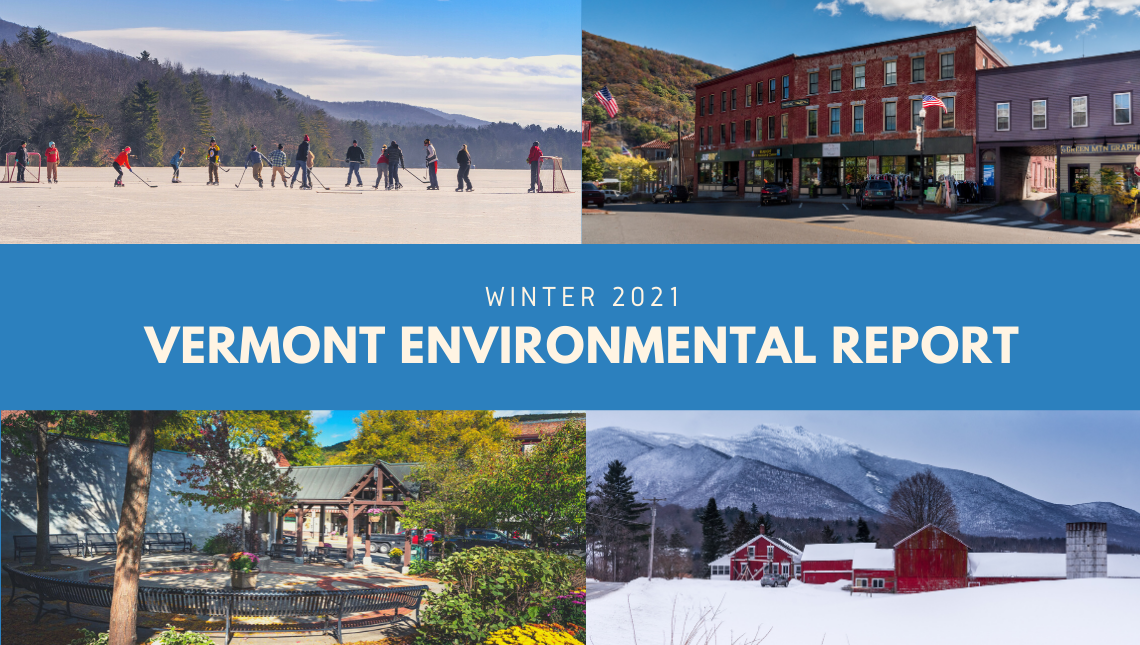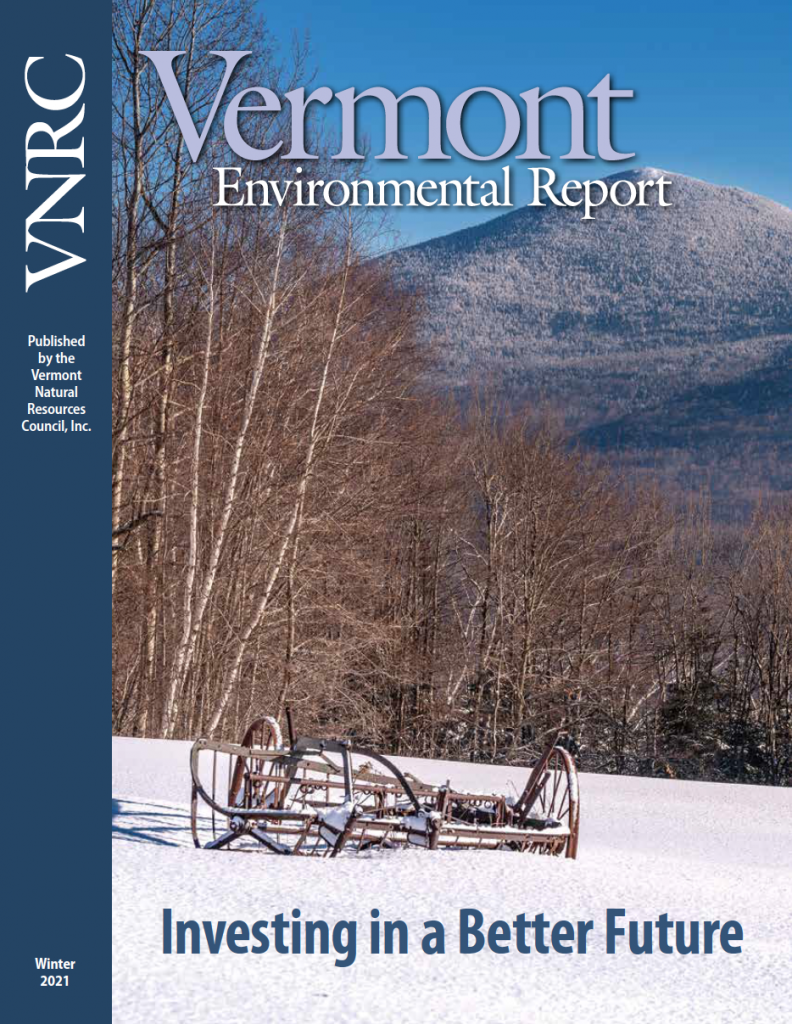Our winter issue of the Vermont Environmental Report is on its way to members’ mailboxes! In the meantime, we can’t wait to share it with you. Click here to view the digital version. Read on below for an introduction to the issue and a note from our Executive Director, Brian Shupe. We’ll be publishing stories online to make them easy to share. Thanks for reading.
Introduction
When we cut corners on maintaining a healthy environment, people suffer. We know this because we’re witnessing it firsthand. Exposure to air pollution has made millions of Americans—people of color in particular—more vulnerable to illness and death from COVID-19. Climate change has already measurably increased health risks in Vermont, from extreme heat-related illnesses, to the increased distribution and abundance of the ticks that cause Lyme Disease, to higher incidences of water contamination caused by more frequent downpours.
The costs of mending an ailing planet are staggering, but the costs of inaction will be even more disastrous. In 2019, in a report called The Cost of Doing Nothing, the International Federation of Red Cross and Red Crescent Societies (IFRC), the world’s largest humanitarian network, reported that if no action is taken on climate change immediately, the number of people worldwide in need of humanitarian aid annually due to the climate crisis could double by 2050. Financial costs could rise to $20 billion per year, a drastic increase from current annual expenditures of $3.5 to $12 billion.
Vermont’s Genuine Progress Indicator (GPI)—an alternative to Gross Domestic Product (GDP) that considers factors such as pollution and the loss of ecosystems and habitats as costs—found that the depletion of non-renewable resources cost Vermont $5.2 billion in 2015 alone.
More than preventing monumental costs, investing in climate mitigation and adaptation can generate vast, quantifiable gains— for public health, jobs and the economy, and people’s wallets. The Vermont Department of Health calculated that meeting the renewable transportation goals as outlined in the Comprehensive Energy Plan (CEP)—which calls for doubling walking, biking and bus use by 2030—would save $1.1 billion dollars in Vermonters’ health care costs by 2050.
A December 2020 report on climate from the United Nations’ World Meteorological Organization states that globally, an investment of $1.8 trillion from 2020 to 2030 in adaptation could generate $7.1 trillion in total net benefits for the people of the Earth.
In this issue of the Vermont Environmental Report, we explore how Vermont might share in these benefits. We also discuss how, in addition to ensuring a healthier, greener state, making the right investments in our environment and communities now could help usher in Vermont’s economic recovery after COVID-19.
Read the rest of the issue here.
A note from our Executive Director, Brian Shupe

The adage that “elections have consequences” has rarely meant more to me than in the past three months. After a steady barrage of lies, complicity, and violence that threatened our democracy, a friend told me that New Year’s Day seemed to wait until January 20, when President Biden and Vice President Harris were sworn into office.
I have written often in the past four years about the Trump administration’s assault on the basic protections for our water and air, public lands and wildlife, and human health. In the past several weeks, President Biden has taken several important steps to reverse many of Trump’s most egregious actions.
These include rejoining the Paris Climate Accord; nominating qualified—and often groundbreaking—people to lead the Environmental Protection Agency, Department of the Interior and other important positions of power; and vowing to conserve 30% of the nation’s land and water by 2030. He is pledging, through words and actions, that his administration will be guided by science, as well as a deep commitment to equity, when addressing the environmental and public health challenges we face.
Obviously, this is a great relief to VNRC and our members and supporters. But beyond the policy decisions, I’m hopeful that it reflects something deeper and more profound in how we view the role of government in our lives. For the past 40+ years Americans have been inundated with messaging about how government is the problem, not the solution. How taxes, especially on the highest income-earners, are unaffordable and a drag on the economy. How regulations—that ensure the air we breathe and water we drink don’t make us sick—inhibit business. How the best stewards of our public lands are the oil and gas industry. How the private sector knows best and, left unimpeded (though often subsidized with public dollars), will work in the public interest and protect the common-wealth.
The results are what many predicted: Out of control global warming; a species extinction crisis; the proliferation of poisonous chemicals in consumer products, industry and agriculture; deteriorating infrastructure; and deep levels of systemic racial and income inequality. These have gotten worse because we have kicked too many cans down the road. We’ve failed to make the investments and enact the policies that can address threats before they turn into crises.
But in a crisis there is opportunity. The Biden administration has identified a plan to address the immediate challenges of the day—COVID-19 and the associated economic downturn—by going big on recovery and investment. Vermont Senators Leahy and Sanders will play central roles as Chairs of key committees and we should support their efforts. If they succeed, it will be an important lesson for Vermont, where our leaders have paid far too much tribute to the affordability and austerity narrative for decades.
This issue of the Vermont Environment Report is about preventative medicine. About how businesses, communities, state government and individuals can work together to not only solve today’s problems, but more importantly, to prevent future problems from growing out of control—and instead build a more sustainable, equitable, and healthy future.





